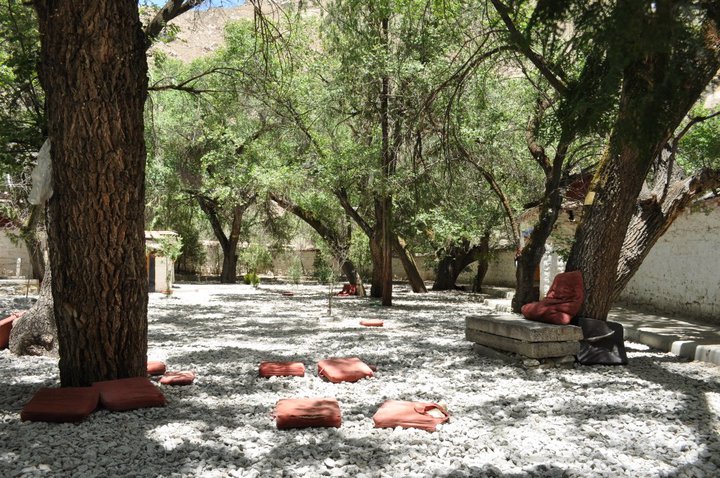Date: 8 June 2013
Location: Marais, Paris
Remarks: Bistro in Paris: Chez Janou
I came to Chez Janou unintentionally during my walk in the arty Marais district in Paris for a place for dinner and Chez Janou had become one of my nice touches in Paris. I intended to avoid those bistrots/ restaurants in the main road in Marais during my search for dinner (There is always a preconception of mine that those restaurants in the main road are either very touristy or over-priced) and had just randomly walked in Chez Janou in one of the quieter corners at around 8pm. I guess I was lured when I saw a busy bistrot in a quiet street.
The place is packed with people waiting for the tables. As quoted from the waiter: "Do you have a reservation? No? Well, you have to wait for at least 45 minutes." "45 minutes?!" "Yes. Look around, everybody is waiting." The place was so packed that you gotta push you way in to the bar for the drinks while waiting for a table.
I was lucky enough that I did not really need to wait since I was alone there and could sit in the bar. I had my dinner for around an hour or so, and I did observed that people did wait for 45 minutes to one hour for the table!!

Chez Janou serves Provençal cruisine. The food are nicely cooked with passion and reasonably priced (it took around 18-30 euro for a main course for dinner), and the services are friendly and warm. The place is very bustling and lively and is a great place for casual dining and in meeting up with friends.
However, seriously, don't even bother to get in if you don' t have a reservation!! I did asked the bartender. The place is the same packed, lunch and dinner, everyday during the week. Though you can grab a drink in the bar while waiting, but 45 minutes to an hour, at least for me, is way too much. So, advanced reservation is ESSENTIAL!!
PS. I only came to beware that Chez Janou was indeed one of the recommended ones in Lonely Planet after I were there!! I guess I did have some luck that night.
Chez Janou
Address: 2, rue Roger Verlomme, 75003 Paris
Telephone number: 01 42 72 28 41
Remarks: near Metro station Chemin Vert
Website: www.chezjanou.com
































